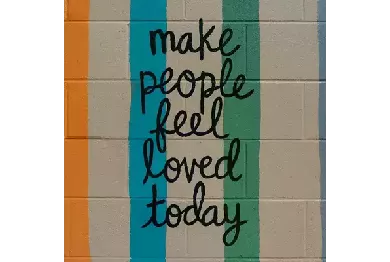A 2023 Deloitte report states that 5 generations are currently working side-by-side.
In the modern workplace, diversity is not just about visible differences; it is about the subtle differences in communication styles & values amongst different generations. As people from all age groups come together in a workplace, each generation brings its own set of skills, experiences, expectations & ways of communication. However, in this blend of multidimensional perspectives, several communication gaps have emerged.
Overview of Generational Cohorts
While generational habits provide a framework for understanding, it is essential to recognize that everyone is unique. These broad patterns serve merely as a cultural foundation, from which the distinct characteristics & traits of a person emerge.
Today’s workplace is a melting pot of generational diversity, with five distinct generations making up the workforce: Traditionalists, Baby Boomers, Generation X, Millennials & Generation Z. Each of these cohorts have been shaped by different societal & technological changes, resulting in varied workplace preferences & generational communication styles.
Key Characteristics of Each Generation
- Silent Generation (1925-1945): Known for loyalty, work ethic, & respect for authority. Prefer formal communication, like face-to-face meetings or written correspondence, valuing hierarchy & clear, direct communication.
- Baby Boomers (1946-1964): Ambitious, optimistic, & career focused. Favor direct verbal communication, such as phone calls or in-person conversations, & prioritize personal connections & body language.
- Generation X (1965-1980): Independent, resourceful, & adaptable. Comfortable with technology, they prefer concise communication like emails or texts but also value face-to-face interactions when necessary.
- Millennials (1981-1996): Tech-savvy, seeking work-life balance & purpose. Comfortable with digital platforms, they appreciate regular feedback, open channels, & a casual, inclusive communication style.
- Generation Z (1997-2012): Digitally fluent, socially conscious, & entrepreneurial. Prefer instant digital communication, valuing authenticity, transparency, & opportunities for creative expression & collaboration.
Challenges of Cross generational Communication
Misinterpretations & Stereotypes – Generational stereotypes lead to misinterpretations & conflicts in the workplace. For instance, a manager might assume a Baby Boomer is not tech-savvy, or a Millennial might be viewed as entitled, affecting team dynamics & trust, further decreasing productivity.
Resistance to Alternative Communication Methods – Introducing new communication methods in a multigenerational workplace can be met with resistance, especially from those accustomed to traditional channels.
Power Dynamics – Power dynamics can influence cross generational communication, particularly with older generations holding more senior positions. This power imbalance may prevent younger employees from expressing their ideas or opinions openly, leading to communication barriers & decreased collaboration. Leadership across generations must address these challenges, to foster seamless collaboration, open communication & trust amongst the workforces.
Strategies for Bridging the Communication Gap
Adopting a Flexible Communication Approach –
A study by Pew Research Center in 2021 found that 72% of Millennials & Gen Z prefer texting for work communication, compared to 18% of Baby Boomers. This stat emphasizes the importance of offering flexible communication channels.
This involves understanding communication preferences across different generations. For example, Baby Boomers prefer face-to-face meetings, Millennials & Generation Z prefer digital communication like instant messaging or social media. By integrating a range of workplace communication tools—from traditional meetings to modern digital platforms—organizations can ensure that all employees feel comfortable, heard & engaged. Offer workshops or seminars that focus on improving communication skills & techniques.
Importance of Fostering a Culture of Mutual Respect & Learning –
Encouraging open dialogues & understanding amongst team members can improve intergenerational relationships.
Organizing workshops or mentorship programs where employees from various generations share their experiences & knowledge can lead to a deeper appreciation of each other’s strengths & perspectives. This not only promotes a culture of respect but also leverages the collective capabilities of the workforce.
Pair employees from different generations in mentorship relationships to facilitate knowledge sharing & skill development. Create opportunities for reverse mentoring, where younger employees can share their expertise in technology or new trends with older colleagues, while also benefiting from the wisdom & experience of their mentors. These initiatives also serve as effective corporate team building ideas, strengthening bonds across the organization.
Leveraging Technology for Inclusive Communication –
Technology plays a pivotal role in facilitating inclusive communication across different age groups in the workplace.
Utilizing tools such as video conferencing, instant messaging, & collaborative platforms can help bridge the gap between generations who have different communication styles.
Create opportunities for skill development & knowledge sharing, where employees can stay updated on the latest digital tools & strategies. Invest in user-friendly communication platforms & tools that cater to diverse generational preferences. Implementing these strategies can help create a culture of inclusivity, collaboration, & mutual respect.
Looking to enhance cross generational communication in your workplace effortlessly? Connect with our experts today.




